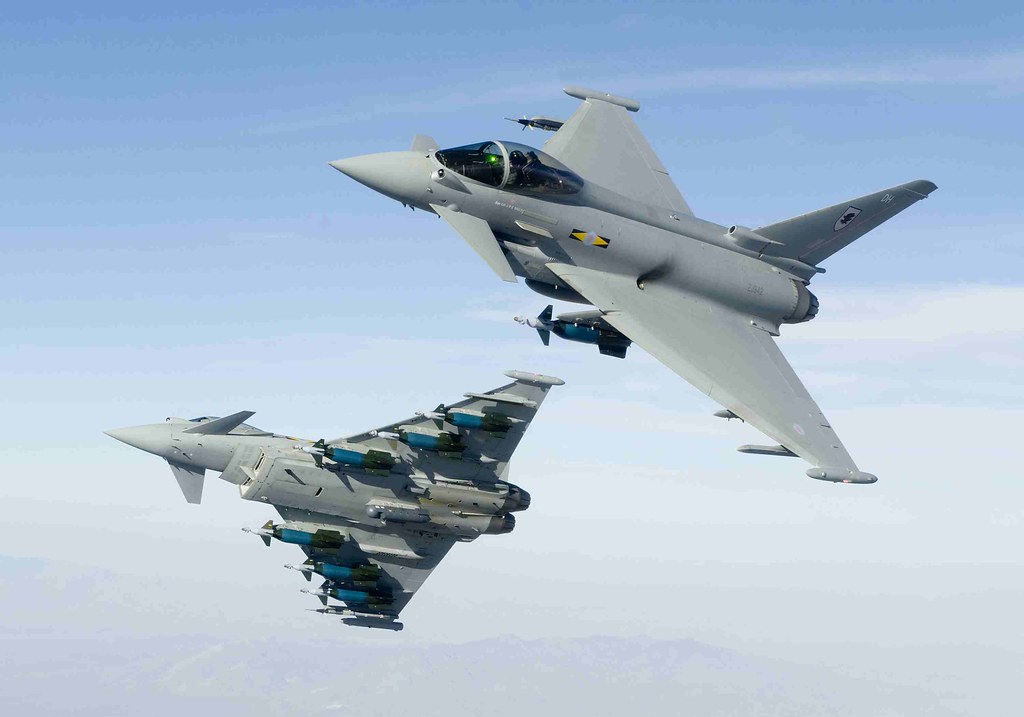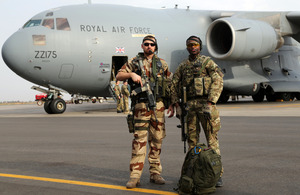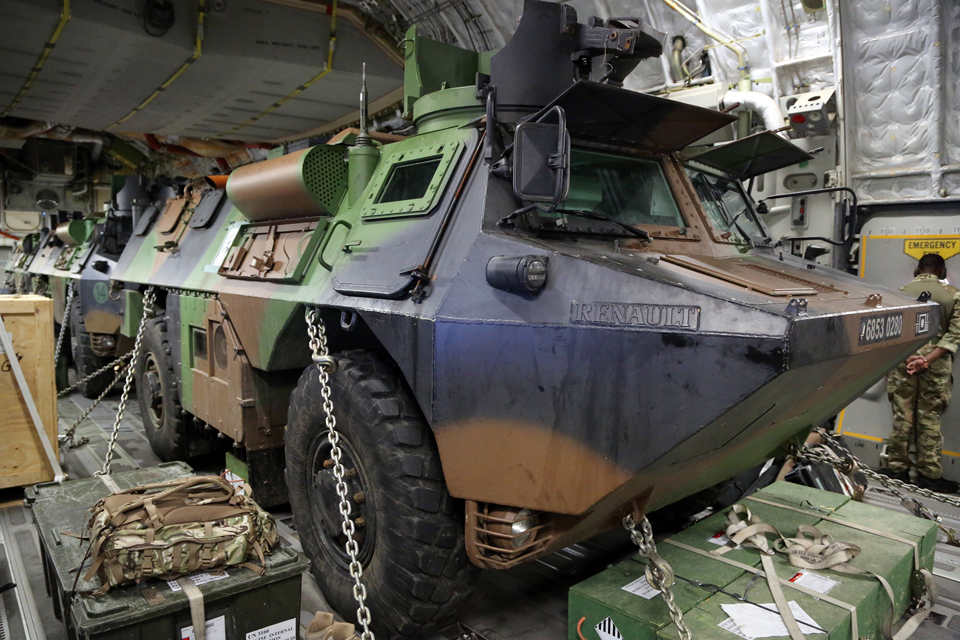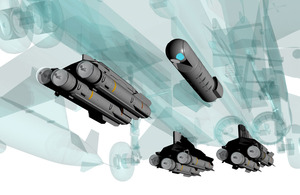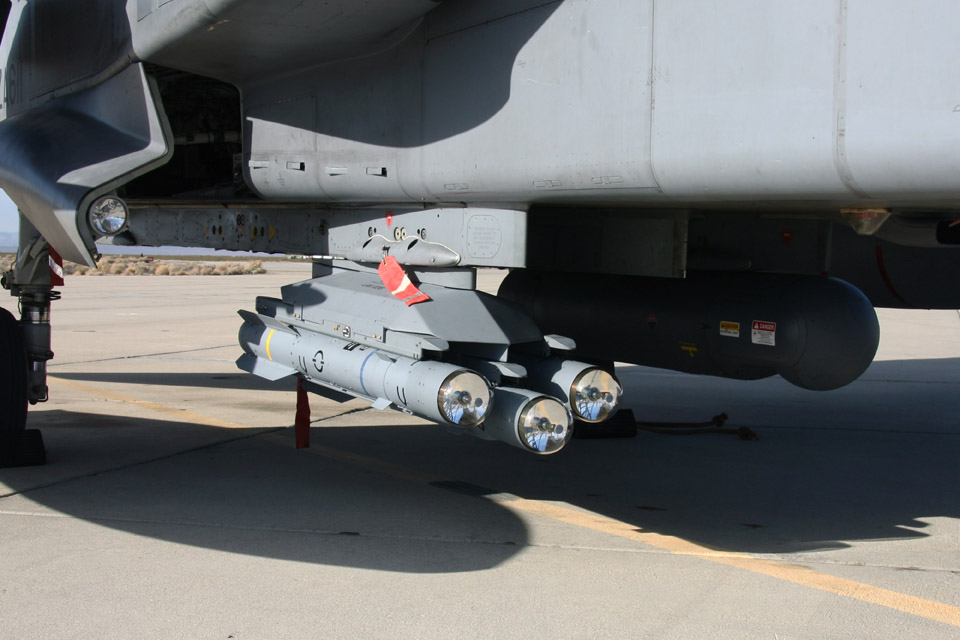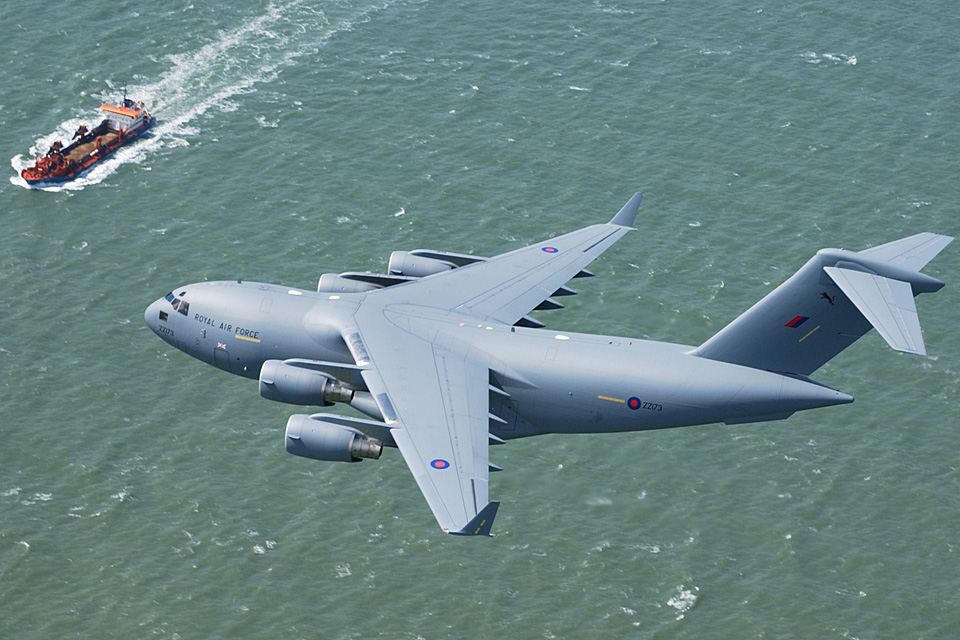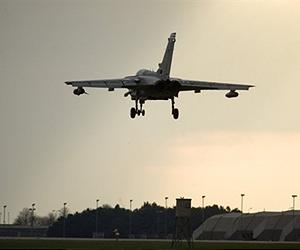JOINT BASE LANGLEY-EUSTIS, Va. — Residents in Hampton Roads are more used to the winds from hurricanes, but for the past two weeks, the skies above Hampton have been churning due to Typhoons — the Eurofighter FGR4s, that is.
Eight Typhoons from the U.K. Royal Air Force’s XI Squadron joined the 1st Fighter Wing in a training exercise called Western Zephyr to familiarize pilots and maintainers from both countries on how to better integrate during a joint mission.
Distinguished by their prominent canards, Europe’s most advanced fighters have been training alongside a variety of F-16 Falcons, F-22 Raptors, T-38 Talons and Navy F/A-18 Hornets.
The pilots and ground crews will then participate in Red Flag at Nellis Air Force Base, Nev., this month.
On one recent afternoon, three of the Typhoons flew alongside two Raptors to escort F-15E Strike Eagles from Seymour Johnson Air Force Base, N.C., on an air interdiction training mission where they were up against an F-16 and a pair each of T-38s and F/A-18s from Naval Air Station Oceana, Va.
“The early impressions, across the board, the training we’re getting here is the best I’ve had on the Typhoon,” said XI Squadron Wing Commander Rich Wells, who flew from RAF Coningsby, Lincolnshire, England, to the southern Virginia base.
Bridging the gap
The pilots in the training on both sides say they are the envy of other fliers in their respective services, able to take their countries’ most vaunted aircraft side-by-side and against each other in training.
“It’s a pretty cool opportunity,” said Capt. Austin Skelley, an F-22 pilot with the 27th Fighter Squadron who helped plan the joint exercise, called Western Zephyr. “People are really excited and eager to fight with and against Typhoon.”
The Typhoon is a unique airframe from the F-22 pilot’s perspective, offering advanced avionics, improved situational awareness and plenty of power in thrust and speed that pilots don’t encounter when going head-to-head against F-15s, F-16s and F/A-18s, Langley pilots said.
“The Typhoon offers the F-22 a unique capability that sort of bridges the gap between the fourth and fifth generation,” Skelley said.
For the pilots of the XI Squadron, the training is a chance for them to test their abilities against all of the U.S. jets.
“We’re pretty much the envy of all the Typhoon pilots back home at the moment,” Typhoon pilot Flight Lt. Alex Thorne said. “A lot of people are excited to see what the Typhoon can do, but are really excited to see what our jet can do alongside and against some of the platforms here.”
Red air
Planning for the operation began last spring. Pilots began arriving in mid-January, delayed by snow in Britain. Crews have been flying two to three flights per day since late January, beginning with basic orientation flights and essential flight formations, said Lt. Col. Geoffrey Lohmiller, the director of operations for the 27th Fighter Squadron.
The pilots moved on to practicing intercepts, close-in visual range maneuvers and basic fighter maneuvers.
Eventually, the Typhoons and Raptors began flying side-by-side, escorting F-15Es on strike missions outnumbered by red (enemy) aircraft, primarily the Navy F/A-18s from Oceana.
“It is more red air than we’re generally used to at home, and we’re taking it to the limit of what the jet can offer,” Thorne said. “And when we start to get comfortable, we take it a bit further.”
While U.S. pilots get opportunities to fly alongside allied pilots in various large-scale exercises, Western Zephyr is different because the pilots are flying side-by-side multiple times per day, for weeks on end, and debriefing together. This has led to crews becoming more familiar with each other more quickly and able to go over missions in more depth than before.
“When we’re able to operate from the same location and within quite small numbers, you are really able to share lessons and take time out to debrief in much greater detail than we’re able to back home,” Wells said.
RAF Typhoon flight and evaluation pilots have flown in the U.S. with Raptors, but now advanced F-22 training is making its way to the conventional war fighter.
“This is an opportunity to bring the Typhoon into that fold and take it to the next level of training and determine how we work together because the reality is there’s not enough fifth-generation fighters out there,” Lohmiller said.
Lessons learned in theater
While the fighters are the most advanced from their respective countries, they have different abilities and advantages. The agility of the F-22 is what first jumped out to Wells, he said.
“Raptor has vector thrust: Typhoon doesn’t,” he said. “What the aircraft can do, it’s incredible. The Typhoon just doesn’t do that.”
The Typhoon’s strength, however, is in both carrying weapons and deploying them. With its two Eurojet EJ200 turbojet engines producing 20,000 pounds of thrust each and the distinctive wing and canard layout, the jet is strong in both its air-to-ground and air-to-air formats no matter what it’s carrying. In its air-to-ground role, the jet flies with four beyond-visual-range missiles, a Lightning 3 designation pod, extra fuel tanks, 4,000-pound bombs and two short-range missiles. These can be aimed by the pilot looking in the direction of an adversary and targeting through a helmet-mounted system, Wells said.
“As we bolt things to the jet … it still flies like a Typhoon,” he said. “High and fast, and that’s where she loves to be. She loves being at 40,000 feet and supersonic. It’s brilliant in terms of performance and getting places.”
These characteristics contributed to the XI Squadron’s involvement in Operation Unified Protector, enforcing a no-fly zone and destroying targets in Libya during summer 2011, experiences the RAF pilots can share with the F-22 pilots who haven’t tested the Raptor in combat yet.
“One of the awesome things about being with these guys is learning some of those real-world lessons they’ve experienced recently,” Lohmiller said. “On a coalition level, we can learn lessons learned about missions that we did not participate in and get those lessons combatwise from these guys.”
On the ground, maintainers from the XI Squadron and Langley’s 27th Fighter Squadron have been able to shadow each other. More than 150 maintainers and support personnel from the RAF are at Langley working on the Typhoons and shadowing American maintainers to “practice and develop together,” said Squadron Leader Pieter Severein, XI Squadron maintenance commander.
Integrating on the ground
The RAF pilots will head to Nellis and begin orientation flights before the Feb. 25 launch of Red Flag.
“U.S. tankers are taking us there, which I hope really shows integration is really significant in what we’re doing,” Wells said.
Integration has taken place outside of operations as well. The U.K. crews have made it a point to thank the local pubs in the Hampton Roads area for their hospitality.
One of the first orders of business for Lohmiller was inviting the RAF crews to his house to introduce them to American football for the Super Bowl.
“Fighter pilots are fighter pilots,” he said. “We get along great.”





